Related Pages
LightSolar Photo Voltaic
» Solar Home System
» Cluster System
» 2-Axis Tracking System
Pico-Hydro
Wind Energy
General Poll - Light
| Cluster Solar PV System |
 |
 |
 |
|
The solar PV cluster system was developed by and first implemented through RIDS-Nepal in 2005 for the Dhadhaphaya village in Humla. It is designed such that it can provide power for basic indoor lighting to a cluster of up to 12 neighboring houses, with one solar PV system. The solar PV cluster system concept can often be the most suitable, technically and economically viable solution, if the homes in a village are built in varies, separate clusters, with each cluster consisting of 4 to 12 homes. This is often the case due to the local geographical conditions of the village, the village’s different casts or when a village is built on a step slope. Each cluster shares one solar PV module, mounted on a seasonal adjustable frame (from 5°-60° south inclined) on one of the homes in each cluster. Each home is connected through armored underground cables to the common battery bank to power their indoor WLED lamps.
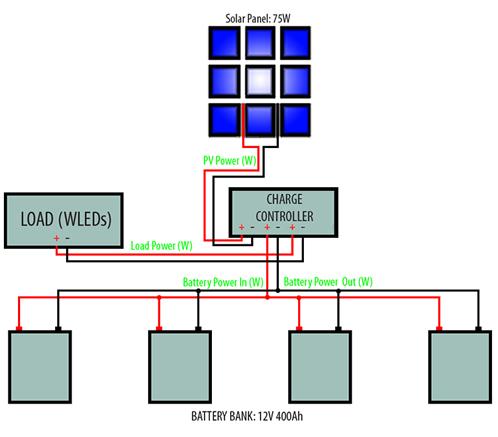 Figure 1: A Schematic Diagram showing Cluster System System SpecificationsThis system is comprised of the following major components:Solar Panel A single, 75W-80W solar PV module. This PV module is mounted on a one-axis seasonable adjustable (from 5°-60° south inclined) aluminum frame on the roof top of the central house in each cluster. The cluster system is a 12 VDc system. A single, 75W-80W solar PV module. This PV module is mounted on a one-axis seasonable adjustable (from 5°-60° south inclined) aluminum frame on the roof top of the central house in each cluster. The cluster system is a 12 VDc system. Charge Controller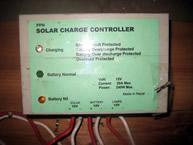 The charge controller’s aim is to protect the battery from overcharging (14.4VDC) and too low discharging (12.0 VDC). Most of the charge controllers used are locally manufactured by the RIDS-Nepal spin off company Pico Power Nepal (PPN). The charge controller’s aim is to protect the battery from overcharging (14.4VDC) and too low discharging (12.0 VDC). Most of the charge controllers used are locally manufactured by the RIDS-Nepal spin off company Pico Power Nepal (PPN). Battery Bank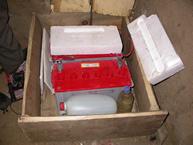 Each cluster battery bank has two 12 VDC flooded lead-acid batteries with a total of 200Ah capacity. Each cluster battery bank has two 12 VDC flooded lead-acid batteries with a total of 200Ah capacity.DC Loads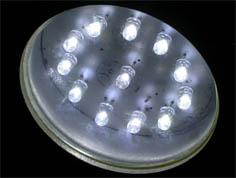 In each household two 12 diode Nichia lamps, with NSPW510DS diodes, and one single, high power, Luxeon diode, WLED lamp are used in each household. Each of these three WLED lamps consumes ~1watt, amounting to a total household power demand of slightly more than 3 watts. All these WLED lamps are locally manufactured by PPN. In each household two 12 diode Nichia lamps, with NSPW510DS diodes, and one single, high power, Luxeon diode, WLED lamp are used in each household. Each of these three WLED lamps consumes ~1watt, amounting to a total household power demand of slightly more than 3 watts. All these WLED lamps are locally manufactured by PPN. Benefits The cluster concept is suitable and feasible for clusters of homes closely built to each other in groups of 4 -12 houses, with one house being used as the “power house”, where the solar PV system, with its solar PV module, the charge controller and the battery bank are installed. All other homes are connected to the “power hosue” via armored underground cables. This keeps the maintenance of the system to a single system though providing power to several households. The solar PV cluster system takes advantage of cultural coherence within caste groupings in management and maintenance of each cluster in the system. The cluster concept is suitable and feasible for clusters of homes closely built to each other in groups of 4 -12 houses, with one house being used as the “power house”, where the solar PV system, with its solar PV module, the charge controller and the battery bank are installed. All other homes are connected to the “power hosue” via armored underground cables. This keeps the maintenance of the system to a single system though providing power to several households. The solar PV cluster system takes advantage of cultural coherence within caste groupings in management and maintenance of each cluster in the system.Solar PV Cluster Systems in HumlaPamlatum VillagePamlatum village is located at latitude 30°0'49.16" North, longitude 81°46'14.57" East and at an altitude of 2,611 meters above sea level. Four 4 cluster systems, each providing 4-8 homes, with each three WLED lamps for basic indoor lighting, a total of 23 households are electrified.
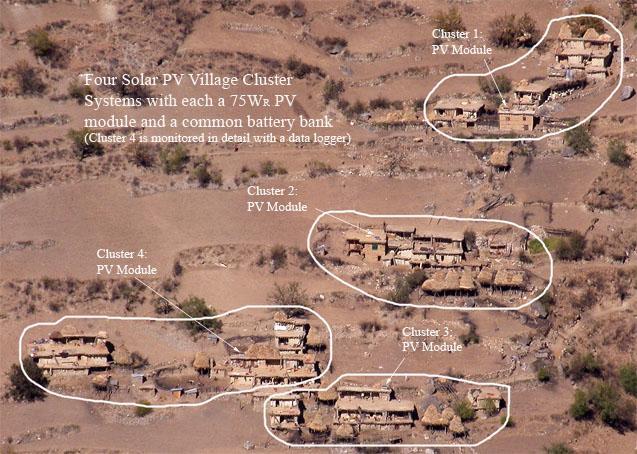 Figure 2: Four Cluster System in Pamlatum Village Dhadhaphaya VillageDhadhaphaya village is located at latitude 29°58'29" North, longitude 81°47'25.7" East and at an altitude of 2,551 meters above sea level. With 18 different cluster systems, 167 households, with each three WLED lamps for basic indoor lighting, are electrified.
 Figure 3: Cluster System Solar Panels in Dhadhaphaya Village |